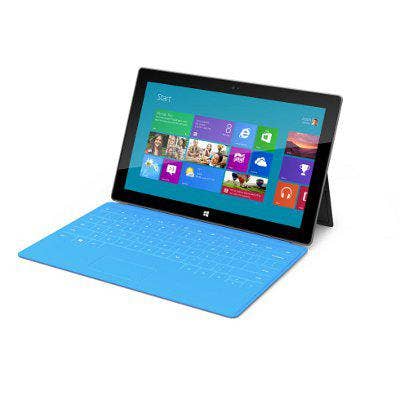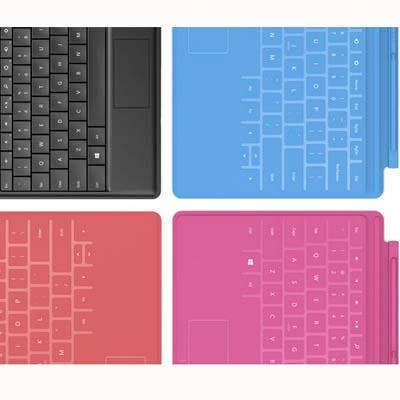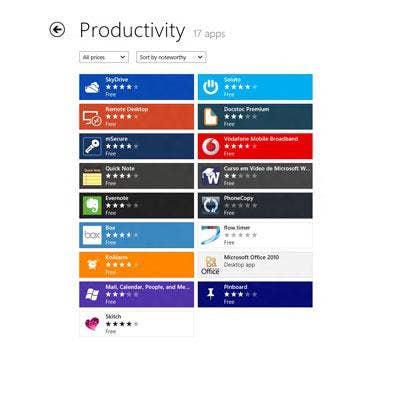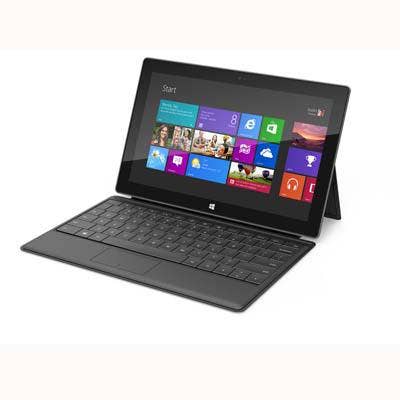5 Challenges For Microsoft's Surface Tablet

A New Tablet Era For Microsoft
Microsoft has introduced two Surface tablet products: Surface for Windows 8 Pro, an Intel Core-based tablet that runs the edition of the upcoming Windows 8 operating system designed for Intel-based PCs; and Surface for Windows RT, a tablet running on ARM microprocessors. Here are five challenges Microsoft faces as it throws down the gauntlet to Apple and its hardware partners.

Cool Tool. But cruel?
Microsoft's new tablets certainly seem cool enough, with their colorful, magnetically attached keyboard/covers, 10.6-inch HD displays, kickstand (can it stand vertically?) and multiple inputs for card and USB media. The two-pound Pro edition will add cameras, a Mini DisplayPort, USB 3.0 and a stylus, and will be built around an x86/64 processor running Windows 8 with 64 or 128 GB memory. Arriving about three months earlier (along with the release of Windows 8) will be the "Office, Home and Student" edition, a 1.5-pound, ARM-based device running Windows RT with 32 or 64 GB of memory.
While all Windows RT systems will come bundled with Microsoft Word, Excel, PowerPoint and OneNote, the only third-party software available for it will be what's offered at Microsoft's App Store. Does that mean that "Surface RT" users will be stuck with IE? This Mozilla blogger thinks so, and such exclusionary practices have landed Microsoft in the hot seat before. Indeed, with its "iPad killer," Redmond has challenged not only Apple but also its OEM and channel partners and maybe even the U.S. DOJ.

Rough Domain
Microsoft's first foray into self-branded computing will be with a device that's unable to join a Windows Domain. Microsoft might have dominion over Apple in the enterprise, but Surface for Windows RT tablets will present the same management challenges as any other BYOD. This could have been an iPad-killing advantage of a Microsoft Tablet, but instead it hobbles Windows-on-ARM devices in terms of enterprise security and manageability.
And, it's a condition that isn't likely to change any time soon. At Microsoft's TechEd conference last week, the company was unwilling even to address questions about Windows RT's ability to join a domain, let alone estimate when it might be able to do so. Domain-member PCs can be managed by Active Directory to receive network and security policy changes and other updates.

Cost Vs. Capability
Microsoft didn't reveal specific pricing but did indicate that its 1.5-pound Windows RT tablet would carry a price that's "competitive with a comparable ARM tablet," and that the cost for a two-pound Intel Core-based unit would be on par with the Ultrabook's sub-$1,000 average price tag. The iPad is priced between $499 and $829 without a hardware keyboard, stand or screen cover. Surface has all three.
To be competitive with Android or Apple’s iOS devices, a Microsoft tablet must have feature parity and be cost competitive. Samsung's top-rated, 10.1-inch version of its Galaxy Tab 2 lists for $399 and includes ample memory, storage, communications, inputs and all-day battery life.
We haven't tested RT units yet, but today's Core-based Windows tablets are fairly heavy and don't hold a long charge. ViewSonic's ViewPad 10pi lists for $849, weighs about two pounds (1lb., 12oz.) and ran for about 6.5 hours on a charge, whereas the iPad 3 weighs one pound, seven ounces and gets about 10 hours per charge.

Self-Defeating
Now revealed, Microsoft's distribution plan even mirrors Apple's, which forsakes traditional OEM partners and channel resellers for its own stores and online outlets. While it's usually not a good idea for a manufacturer to compete with its own customers, Microsoft's track record at marketing self-branded products (not counting mice, keyboards and such) is exactly 50/50 (Zune and Xbox).
So while most channel resellers could share at least one "I was outbid by the vendor" story, a move by Microsoft to sell tablets would set it against major OEM customers like Lenovo and Samsung. This could spell disaster for a young operating system so dependent on volume buyers to market their own hardware and build a critical mass of users for which to build apps, not to mention having to build an ecosystem of programmers to develop them. In such a scenario, Microsoft's inherent advantages would include access to an operating system that was essentially free and the ability to design the hardware to match (as does Apple). We see this as a severe disincentive for OEMs.

Got Apps?
In his keynote speech announcing the Surface tablets, Microsoft CEO Steve Ballmer spoke very little about software development and apps for Windows RT. And indeed, there are very few apps for the platform just now. What's more, anything built for x86 or x64 systems will not run on the ARM version of Windows. So, companies considering adopting a Surface tablet could face building their applications from scratch.
As of today, Microsoft claims that some apps with slight adjustments can be recompiled to run on Windows RT, and that Visual Studio 2012 will build apps for targeting any current version of Windows using a variety of programming languages including C++, C# and VB.NET, as well as HTML5 and JavaScript.

More 'Surface' Coverage From CRN
Microsoft Introduces 'Surface' Tablet:
Surface Tablet Takes On Apple, Hardware Partners
Microsoft Enters Tablet Arena With New 'Surface' Devices
Microsoft Reportedly Readying Its Own Tablet Computer